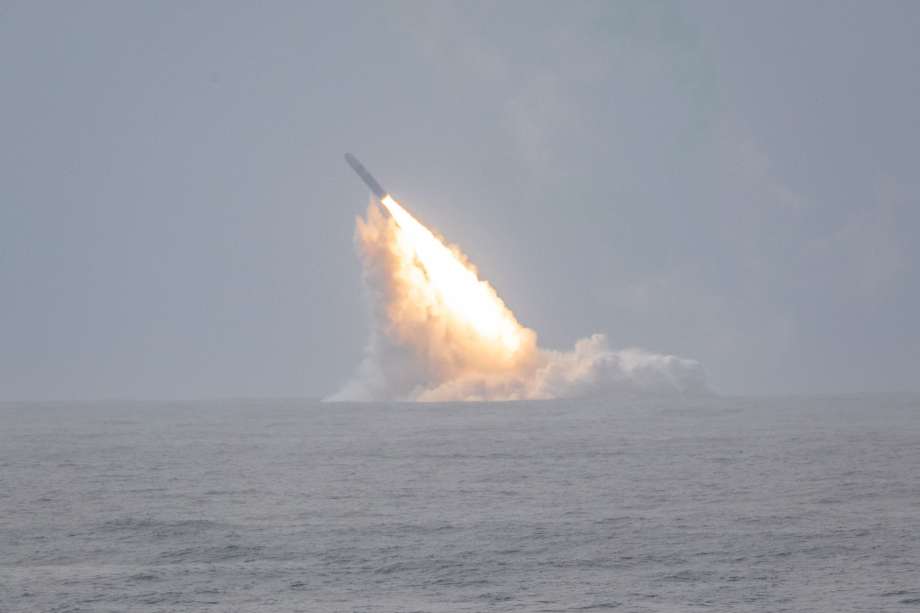Breaking news
US Navy successfully launches Trident II D5 ballistic missile from submarine USS Louisiana.
According to a PR published by Lockheed Martin on September 29, 2023, the firm in collaboration with the U.S. Navy, recently announced the successful launch of the Trident II D5 Life Extension Fleet Ballistic Missile (FBM). This test launch took place in the Pacific Ocean near the California coast.
Follow Navy Recognition on Google News at this link
 Trident II D5 ballistic missile launching from Ohio class submarine USS Louisiana. (Picture source: Lockheed Martin)
Trident II D5 ballistic missile launching from Ohio class submarine USS Louisiana. (Picture source: Lockheed Martin)
The test further strengthens the Trident II D5's impressive record, marking its 191st successful test launch since its design was finalized in 1989. This makes it one of the most reliable large ballistic missiles to date.
The U.S. Navy submarine, USS Louisiana (SSBN 743), showcased the preparedness of its crew and the efficiency of the strategic weapon system through this test, subsequently certifying the crew for strategic patrol.
This demonstration serves as a pivotal data collection event for the performance of the D5 Life Extension missile using a specialized test missile kit, another innovation by Lockheed Martin. It's noteworthy to mention that this is the concluding planned demonstration following an engineering refueling overhaul from an OHIO-class submarine.
The advanced D5 missile, a product of Lockheed Martin's innovation for the Navy, is currently a significant component of the U.S. OHIO-class and UK VANGUARD-class submarines.
This three-stage, solid-propellant, inertially-guided ballistic missile boasts a nominal range of 4,000 nautical miles and the capability to carry multiple independently targeted reentry vehicles.
2017 saw the introduction of the D5LE to the fleet. The Life Extension program has allowed for a modernized approach to submarine-launched ballistic missiles, providing superior performance of the D5 missile at a fraction of the cost of a new design.
Technical data
The Trident D5 missile, weighing 130,000 lb (59,000 kg) and measuring 44 ft 6.6 in (13.579 m) in length, has a first-stage diameter of 6 ft 11 in (2.11 m). It can be equipped with various warheads, including the 1–12 Mk-5 RV/W88 with a 475 kt yield, 1–14 Mk-4 RV/W76-0 with a 100 kt yield, and others.
The missile utilizes three solid-fuel rocket motors; the first two stages are powered by Thiokol/Hercules rockets and the third by a United Technologies Corp. rocket.
Its propellant, NEPE-75, comprises nitrate ester, HMX bound by polyethylene glycol, aluminum, and ammonium perchlorate. With an operational range surpassing 7,500 mi (12,000 km), it can reach speeds up to 18,030 mph (29,020 km/h) in the terminal phase.
The missile employs the MK 6 astro-inertial guidance system with the capability to receive GPS updates. Steering is managed through a single movable nozzle actuated by a gas generator. With an accuracy of about 100 meters, it is launched from ballistic missile submarines.



























